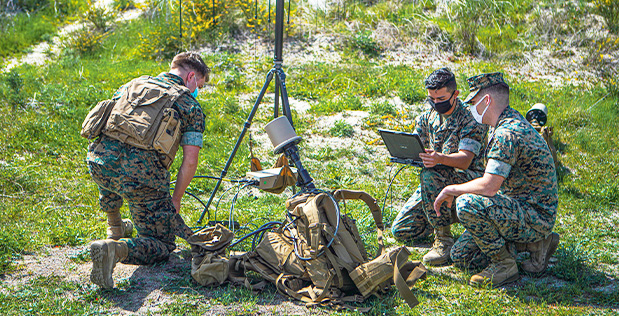
DARPA seeks ‘Always On’ interconnected networks for missions to ensure critical data finds a path to the right user at the right time
Available and reliable tactical data and communications networks are critical in modern warfare, however current military networks are manually and statically configured, stove piped, prone to error, and don’t scale easily, according to an announcement from the Defense Advanced Research Agency.
Currently, no capability exists to dynamically control interconnected networks to ensure warfighters can always send and receive data even in contested environments, according to DARPA.
To provide continuously available network pathways, DARPA announced its Mission-Integrated Network Control (MINC) program. MINC seeks to develop software that autonomously configures networks of networks regardless of the communication device or networking resource.
“The goal is to create an ‘always on’ secure network overlay that gives warfighters backward and forward compatibility across heterogeneous networks,” said Mary Schurgot, program manager in DARPA’s Strategic Technology Office. “MINC aims to develop software that autonomously prioritizes information and communications paths to achieve the Mosaic Warfare end state of agile, self-healing networks that enable cross-domain kill webs in highly contested, highly dynamic environments.”
MINC will leverage software-defined networking (SDN) technology for remote, intelligent control of heterogeneous networks. Unlike commercial applications of SDN, which focus on homogenous networks, MINC technology will manage multiple data and control layers via a single secure control overlay.
In the past, the Department of Defense (DoD) approach to building communications systems has modelled a vertically integrated stack. Currently, both DoD and commercial approaches deconstruct this stack and employ open, flexible solutions. Successful DARPA networking and information programs such as DyNAMO, SHARE, SoSITE STITCHES, and Network UP have addressed various challenges associated with deconstructing the stack and demonstrated key technologies that MINC will leverage.
“Innovations from these DARPA efforts have enabled radio and message interoperability, customized data delivery, packet level data security, and resilience via data and control plane separation,” Schurgot said. “MINC aims to culminate the paradigm shift from static, manual configuration of closed, rigid architectures by moving towards autonomous, mission-driven approaches where applications and networks adapt with mission dynamics and operator feedback.”
For more information and details, view the MINC Broad Agency Announcement solicitation available here: https://go.usa.gov/xHvrC